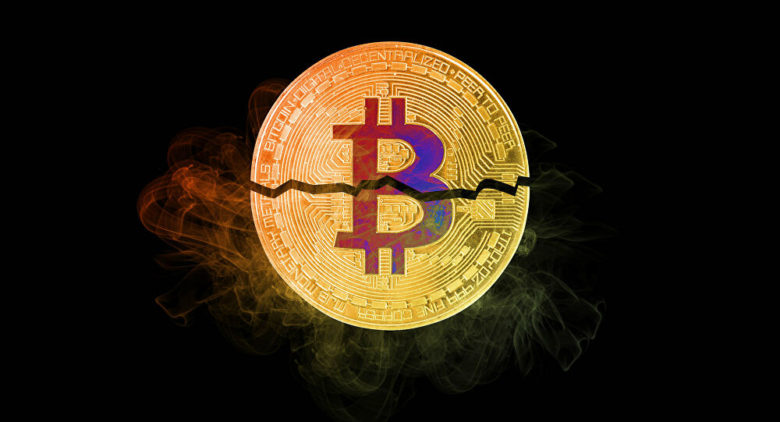As Bitcoin’s popularity grows, so too do the false claims made about it. It seems like a good time to dispel some of these as we see new all-time-highs and major news breaking nearly every day. Let’s examine some of these myths and misconceptions a little closer to see if they have any merit and correct the record if necessary.
Some of Bitcoin’s detractors are often heard spouting things like “Bitcoin’s value is based on nothing”, and “it’s just a bubble, it won’t last”. So, let’s separate fact from fiction while considering Bitcoin’s legitimate risks to find the truth about the most popular cryptocurrency.
Myth #1: Bitcoin is a bubble
It is true that Bitcoin is traded as a speculative instrument by those who seek quick returns on their investments. However, that does not mean that Bitcoin in itself is a bubble.
An economic bubble is when asset prices appear to be based on inconsistent views about the future value of the asset. Bubbles are economic cycles with unsustainable increases in market value of an asset. When investors realise the price is higher than the asset’s fundamental value, we see the pop, or dramatic drop in price.
Sometimes, we hear Bitcoin compared with the Dutch “tulip mania” speculative bubble of the 17th century. Speculators caused prices of tulip bulbs to rise 26-fold in 1637. The bubble lasted only six months, from beginning to end, then popped and never recovered.
Reality:
- Bitcoin was created in 2009 and has moved through multiple price cycles during the 12 years since. And with each cycle, the price has recovered to reach new highs. This is typical with any new industry or technology. It happened with the dot.com bubble, for example, in the late nineties when many companies sank. Amazon was one such company, with it’s stock price plunging from $100 to a mere $5. As we all know, Amazon came back and is now one of the most valuable companies in the world. Boom and bust cycles are expected and even predicted with any new technology.
- Time will tell, but many economists and pundits agree that Bitcoin’s oscillations form a pattern typical of young markets. They say Bitcoin will most likely continue to surge and recede but with smaller swings and longer duration each time until it settles into relative stability in the future.
Myth #2: Bitcoin does not have a real world use
Bitcoin’s critics claim it has no real world uses and is only ever used for illicit activities by criminals. Neither of those claims are true. The advantage blockchain technology and Bitcoin is it’s inherent ability to make transactions to anyone, anywhere, without an intermediary bank or financial institution in the middle. It is also, increasingly, being used by major institutional investors and private individuals as a hedge against rampant inflation throughout the world.
Reality:
- Bitcoin has become popular as a store of value in recent years. This function was traditionally fulfilled by gold bullion investments. Hence Bitcoin’s acquired the nickname, “digital gold”. This has been particularly evident in the increasing number of major publicly traded companies like Tesla, Square and MicroStrategy, to name but a few, buying billions of dollars worth of Bitcoin to better manager their assets.
- While gold is heavy and bulky and requires costly security and insurance to store it, Bitcoin is a digital asset that can be sent as easily as sending an email. And like gold, Bitcoin is scarce. There can never be any more than 21 million Bitcoin in circulation.
- In the early years, the Bitcoin received negative attention, particularly since it was used as a means for payment on the dark web. Since the biggest dark-web market was shut down, however, prices have been rising continuously.
- Bitcoin, like any form of money, can be misused for illicit purposes. When compared to the US dollar, however, illicit use of all cryptocurrencies is a mere drop in the ocean. Today, according to a recent report, 2.1% of Bitcoin transaction volume in 2019 was related to criminal enterprise.
- All Bitcoin transactions happen on an open blockchain. And all blockchains can be viewed by anyone with a connection to the internet. Therefore, counter-intuitively, it can be easier for authorities to track illegal activity than it might be in the traditional financial system.
Myth #3: Bitcoin doesn’t have real value
The US dollar, Euro as well as most fiat currencies today are not backed by a physical asset like gold. So what value do they have a part from people’s trust and acceptance? Bitcoin is only different in that it is hard coded to be scarce. Therefore, it is resistant to the inflation that all fiat currencies have when authorities print money, diluting the existing supply and the value of your savings.
Reality:
- Although not all Bitcoin have come into existence yet, there can only ever be 21 million Bitcoin ever created. This scarcity is one of the major drivers of its value.
- Not only is the supply capped, but the amount of new Bitcoin coming into existence through mining is also declining in a process called “halving”. Block rewards paid to miners in the network are halved every 4 years.
- This supply constraint has ensured Bitcoin price trajectories broadly remain positive in the long term. Market forces like supply and demand reign supreme in cryptocurrencies. A concept lost to fiat currencies. A decade ago, Bitcoin was worth less than a cent. As of April 2021 we are over $60,000 and rising. (Check Bitcoin live prices)
- Since a computer processor is required to validate and secure a transaction before it is placed on the blockchain, there is further value to Bitcoin. This value is derived from the work that is done by the thousands of computers around the world in exchange for a reward of new Bitcoin.
Myth #4: A new cryptocurrency will replace Bitcoin
New cryptocurrencies with new functions and features are developed every year. Bitcoin, as the first really successful digital money, however, has not been surpassed by any. In fact it is still by far the largest in terms of market cap by, a significant margin.
Reality:
- Bitcoin is the most popular cryptocurrency, making up around 60% of the total crypto market.
- There are many reasons for this. Bitcoin’s “first-mover” advantage, as well as the purity of its mission as a truly decentralized and open currency.
- Bitcoin is decentralized and is operated by a global community of miners and nodes. There is no central authority like a government or central bank.
- Bitcoin’s community continue to work on it’s underlying architecture. If new functionality, features, or security against a newly-discovered bugs, needs to be built, the community can initiate a fork to upgrade the network.
- A fork upgrade requires a 51% majority of the community to support it for the change to take affect. This means Bitcoin can adapt and evolve as required. The last time this happened was in 2017 when the Segregated Witness (“SegWit”) upgrade happened.
- If there is no community consensus leading to a majority, however, what’s known as a “hard-fork” can take place creating a completely new blockchain. This is possible because the software is open-source. Bitcoin Cash was created in this way — but so far no Bitcoin clones have come anywhere close to replacing the original.
- Since there is continuously growing innovation in the industry, however, it is not beyond the realms of possibility that a new bigger cryptocurrency could emerge. The experts mostly agree this is not likely to happen any time soon, though.
Myth #5: Investing in Bitcoin is gambling
Regulations have been developed both in local jurisdictions as well as internationally, which allowed a huge and growing amount of institutional investors like hedge funds and public traded companies such as Tesla to trade in Bitcoin as well as other crypto assets. As of April 2021, Bitcoins market cap has surpassed $1 Trillion. (Check current market cap)
Reality:
- Bitcoin historical data, like that of any traded asset, is subjected to technical and fundamental analysis. There is a fundamental rationale for investors to believe their investments will have a return. It is very different to a casino, for example, where you know the odds are tilted in favor of the house.
- There are many investing strategies that have been lauded by the crypto community over the years. But one in particular has stood out for reducing the impact of volatility. Dollar-cost averaging where you invest a regular amount, weekly, regardless of what the market is doing has proven popular. The strategy has been fruitful long term in a positive trendline environment.
- Volatility in the Bitcoin market has been decreasing according to a recent Bloomberg analysis. This report compared the most recent price increases with the 2017 boom and found volatility has been dampened by the rise of institutional investors as well as the stabilising effects of crypto going “mainstream”.
Myth #6: Bitcoin isn’t secure
The Bitcoin blockchain has never been hacked. As it is built on open-source software, it has been scrutinised by countless hackers, security experts and computer scientists. One of the most important elements of Bitcoin technology is that it solves the double-spend problem, making it a “trustless” peer-to-peer currency. Also, all Bitcoin transactions are irreversible.
Reality:
- There has been some high-profile security failures by third-party companies that work with Bitcoin like the early Japanese exchange Mt. Gox. In all of these failures, it was the flawed company software that was hacked and not the Bitcoin blockchain network itself.
- Since it’s creation in 2009, Bitcoin’s core protocol has worked securely with 99.9% up-time.
- Crucially, there is a vast amount of computing power that secures the network in the form of nodes and miners. These miners that power the network are located throughout the world, with nodes in 100 countries ensuring there is never a single point of failure.
Myth #7: Bitcoin is not good for the environment
Determining the environmental impact of Bitcoin is hard. But, Bitcoin mining is an energy-intensive process. However, the entire global banking system with its processing of traditional transactions, powering of office buildings and ATMs as well as bank branches also require energy.
Reality:
- New York-based fund Ark Investment Management concludes, in their recently published research report, that “Bitcoin is much more efficient than traditional banking and gold mining on a global scale.”
- Furthermore, according to Cambridge Bitcoin Electricity Consumption Index, a significant portion of Bitcoin mining energy consumption is derived from renewable sources such as wind, hydro and solar. This figure ranges from 20 percent to 70 percent.
- The Cambridge researchers concluded: “Bitcoin’s environmental footprint currently remains marginal at best.”
- In fact, the inherent economic incentives to energy efficient Bitcoin mining are driving sustainable energy innovation in the sector, as miners continue to seek ways to decrease energy consumption and drive up profits.







